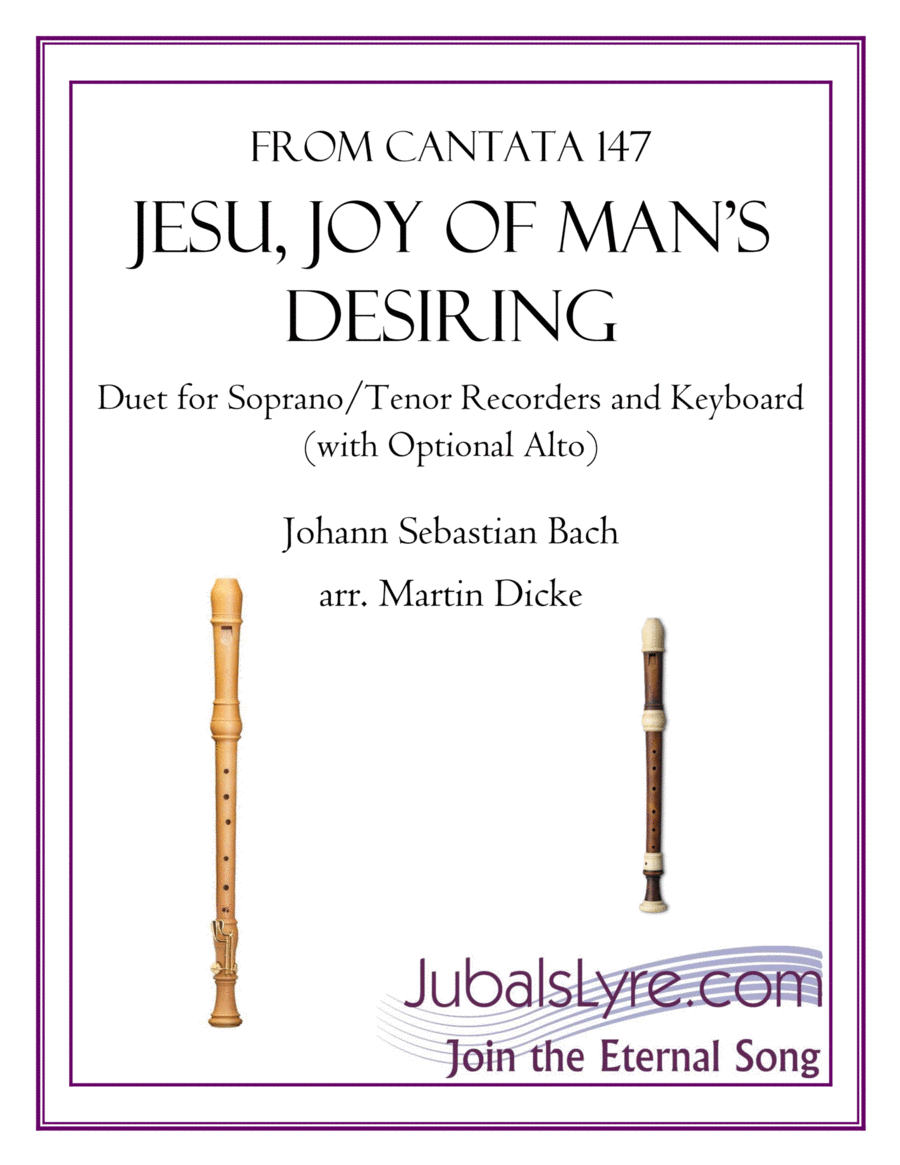Alto Recorder,Descant Recorder,Soprano Recorder,Tenor Recorder,Treble Recorder - Level 3 - Digital Download SKU: A0.918894 By Jubal's Lyre Music. By Johann Sebastian Bach. Arranged by Martin Dicke. Baroque,Classical,Contest,Festival,Sacred,Wedding. Recorder Ensemble. 21 pages. Jubal's Lyre Music Publishers #6361317. Published by Jubal's Lyre Music Publishers (A0.918894). This beloved work by J. S. Bach is arranged here as a duet for Soprano or Tenor Recorders with optional Alto Recorder. An extra early intermediate level keyboard part is included as is an optional part for Cello/Bassoon. It is perfect for weddings, concerts, or solo/ensemble repertoire and is able to be used with the Choral Edition, which provides a new translation. For worship, it can be performed almost any time since it exudes peace and joy, but it is particularly suited for Advent and Christmas since it comes from Cantata 147, Herz und Mund und Tat und Leben (Heart and Mouth and Deeds and Life), a cantata about Mary, the mother of Jesus, visiting her cousin Elizabeth and singing the Magnificat (see Luke 1:26-56). For more music and information, visit www.jubalslyre.com/music.
